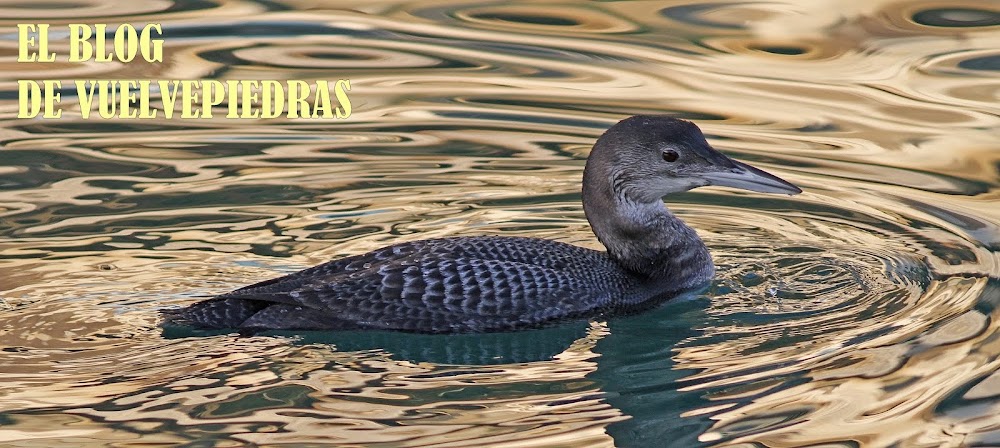Comparto esta noticia, aparecida recientemente. El 13 de febrero de 2013, un turista encontró en el lago Bogoria (Kenia), el cadáver un flamenco enano que portaba una anilla. Tras enviar los datos, la sorpresa fue tremenda: ¡fue anillado 1962! Un viejo, viejísimo flamenco enano que nos lleva a cuestionarnos: ¿cuánto vive un flamenco?
La historia la envía Jorge Fernández Orueta, de la web de BirdLife International
By Venancia.Ndoo, Tue, 09/07/2013 - 15:44
“Personally, I hope that no one
ever will fully rationalise flamingos, and that they will remain the
supremely beautiful, elusive, opportunistic, unpredictable beings I like
to think they are”.
The above words contained in the late Leslie Brown’s book ‘Encounters with Nature’
continue to float as the presence or absence of Lesser and Greater
Flamingos in the saline lakes of East Africa provokes admiration, debate
or concern in public and conservation circles. Leslie served as an
agricultural officer in the colonial Kenya but he is greatly remembered
as an avian researcher who contributed much of what is known about
raptors, pelicans and flamingos.
A
Lesser Flamingo bearing a ring on its leg that was hatched in Lake
Magadi in 1962 was recently recovered by a tourist - Nick Armour of
England in Lake Bogoria on 13th February, 2013. The
information retrieved from the ring confirms that the dead individual
lived for 50 years and almost four months, making it the oldest known
living wild flamingo. “This is an amazing discovery and now we know that
some of them lived to be 50 years old”, said Fleur Ng’weno of Nature
Kenya (BirdLife in Kenya).
Between
1961 and 1962 the soda mud flats of Natron were underwater making the
site unsuitable neither for nest making nor raising young, thus the
breeding episode of that year was temporarily shifted to Lake Magadi in
Kajiado County, Kenya. Collin Jackson of the Ringing Scheme of East
Africa said the recovered ring was one in a batch obtained from British
Trust for Ornithology (BTO). Of the 8,000 flamingos ringed, over ten
recoveries have been made since 1962 notably one in West Africa which is
6,197km away from Lake Magadi.
The
recovery of the “Jubilee Flamingo” emphasizes the connectedness of the
soda lakes within the Great Rift Valley. The 1.5 – 2.5 million pink
birds in Eastern Africa roam the soda lakes in Kenya, Tanzania and
Ethiopia in search of food. However the only regular breeding site for
these birds is Lake Natron in Tanzania. The lake is largely covered by
soda, raising the surface temperatures up to 60 degrees that keeps away
mammalian predators from the nesting sites. However, there is abundant
food and fresh water springs relied upon for drinking and washing off
soda from the feathers of flamingos.

Based on a detailed account by Leslie Brown and Alan Root in the International Journal Science of Avian Science – IBIS,
at least 850,000 young were hatched in Magadi although a high rate of
mortality was noted. Adult flamingos would fly to Lake Natron to obtain
food usually coming back in the evening to feed the chicks. The chicks
faced predators such as hyenas, vultures and jackals. Hindrance of
movement and sometime death also resulted from salt-saturated water that
formed anklets around their legs growing to the size of an apple.
Twenty-seven thousand chicks had the anklets removed by a team of
volunteers including the late Leslie Brown, Alan Root (a wildlife
filmmaker), British Army, members of East Africa Natural History Society
and even Evelyn Baring (Governor of Kenya, 1952-59). Children who were
away from school owing to a teacher’s go slow were also part of the
team. Another 200,000 were saved from the super salty water by driving
them into areas with fresher water pumped into the soda flats by Magadi
Soda Company. Wellington boots donated by Bata Shoe Company protected
the volunteer’s feet from the biting soda as they rescued and ringed the
birds.
 |
| The-Jubilee-flamingo-bearing-the-ring. Photo by Nick Armour |
Bird
ringing or banding involves capturing birds by use of a special net known as
mist net, conducting and recording various measurements such as body weight,
length of the beak, tarsus and wings as well as feather condition. Other
specially modified traps are used for birds of prey and adult Flamingos. Just
before the bird is released, a ring either plastic or metallic is attached to
one of the legs. The ring contains a distinct number accompanied with the name
of the specific ringing scheme. This is carried out by trained experts or
volunteers but members of the public are encouraged to submit rings recovered
to the nearest conservation agency. The information obtained provides more
understanding about their movements and life history that is necessary to draw
up appropriate conservation measures especially for threatened bird species.
In
recent years, Lake Natron has been under intense threat coming from a proposal
to construct a US$450 million soda ash factory. Initially proposed by Tata
Chemicals industries and now spearheaded by the Tanzania Government, the
factory would cause major breeding disruption and put the entire East Africa
Lesser Flamingo population at risk of extinction. A Cost Benefit Analysis study
conducted indicated low economic returns of the soda mining project as compared
to other activities such as tourism. Based on this, the Tanzania
government should re-consider its intention to go ahead with the project.
BirdLife, RSPB and Lake Natron Consultative Group have spearheaded the “Think
Pink” campaign drawing attention to the negative impacts of the soda ash
proposal to flamingos and economies of East African countries.
